Navigating the world of tires can be a slippery slope, especially when you’re looking for the best tires for rain. Whether you’re a daily driver braving heavy rains or a performance enthusiast seeking optimal grip, the right tires can make all the difference. From premium tires offering superior rain traction to budget options that don’t compromise on safety, the market is awash with choices.
Whether you’re facing the notorious wet weather conditions of Florida and Washington State or the torrential downpours of Charlotte, this guide aims to help you make an informed decision.
Moreover, this guide can be extremely beneficial for people living in rainy areas around the world, especially in equatorial regions that face wet and rainy weather throughout the year.
Table of Contents
Types of Tires Suitable for Rainy Regions
Understanding how various tire types fare in rainy conditions is key to selecting the right one for your wet-weather driving needs. Here’s a breakdown of how different tire types perform in the rain:
All Season Tires
All-season tires are designed to adapt to a range of conditions, including rain, heat, and light snow. While not exclusively crafted for rain, they mostly have circumferential or angular grooves that effectively resist aquaplaning. All-weather tires, a sub-type of all-season tires are specially designed for wet and snow conditions. They possess numerous sipes over the tread surface that provide extra grip in rain and deep snow.
Summer Tires
Specifically designed for warm weather, summer tires offer optimal performance in both dry and wet conditions during the warmer months. Their unique tread patterns and rubber compounds are engineered to provide excellent grip and handling on wet roads, reducing the risk of hydroplaning. When choosing summer tires for rainy conditions, make sure they have wide circumferential grooves in them.
Winter Tires
Winter tires are tailored for optimal performance in snowy, wet, and icy conditions. Winter tire models also deliver commendable performance in rain. If you anticipate driving in both snow and rain, it’s worth exploring winter tires with strong hydroplaning resistance and excellent traction in wet conditions.
High-Performance Tires
High-performance tires, often grouped with summer tires, excel in warm, dry conditions and offer superior grip and handling. Their performance in rain varies based on their composition and tread design, which can significantly differ among models.
Details of the 10 Best Tires for Rain and Wet Roads In 2024
When seeking tires ideal for rainy conditions, opt for those that blend a rubber compound and a tread design that effectively channels water away and ensures maximum road contact. These include circumferential grooves, angled grooves, and sipes.
The tires listed in our list have all these tread characteristics and are highly suitable for wet and rainy conditions. Unlike snow tires, rain tires don’t fall under a distinct category, so it’s essential to evaluate how various tire models perform in wet conditions.
1. Michelin CrossClimate SUV
Michelin CrossClimate SUV is a tire that’s a game-changer for SUV and crossover drivers. Michelin stands by the quality of the CrossClimate SUV. It offers a 6-year or 50,000-mile warranty and a 60-day satisfaction guarantee.
Pros
Cons
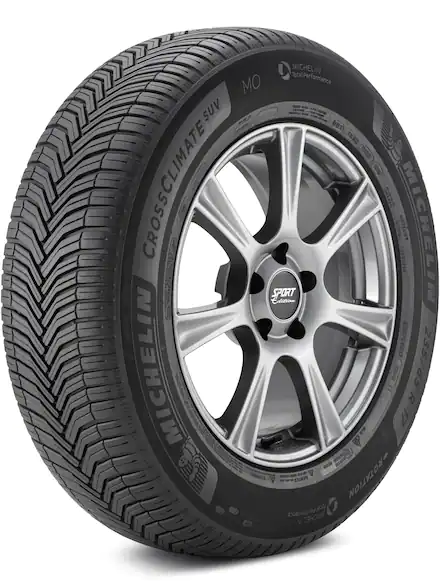
Overall Rating
| Treadwear | 8.8 |
| Dry Traction | 9.8 |
| Wet Traction | 9.5 |
| Winter Performance | 9.2 |
| Noise and Comfort | 8.5 |
| Price | 8.5 |
Our Verdict
Imagine a tire that doesn't shy away from standing water on roads, but instead, embraces it. Michelin CrossClimate SUV's unique tread blocks are the secret behind this. They provide excellent grip on wet, and snowy roads, and ensure corner stability on dry tracks and highways.
Now, l want to talk about rain. This tire's exceptional hydroplaning resistance and braking performance will keep you safe. It's like having your rain shield for your vehicle.
Yes, some users have reported noise issues on highways. But they are also passionate about its impressive performance in various conditions - wet, dry, and roads, during heavy rain and snowstorms. If you can overlook the noise, this tire is a performance powerhouse.
Compared to the Michelin CrossClimate2, the CrossClimate SUV takes the lead in snow traction. It proudly wears the three-peak mountain snowflake (3PMSF) symbol, a testament to its superior snow performance.
But remember, it's not for everyone. Its soft rubber compound isn't the best fit for gravel terrains. But for those who prioritize performance in wet and rainy conditions, this all-season tire is a top contender.
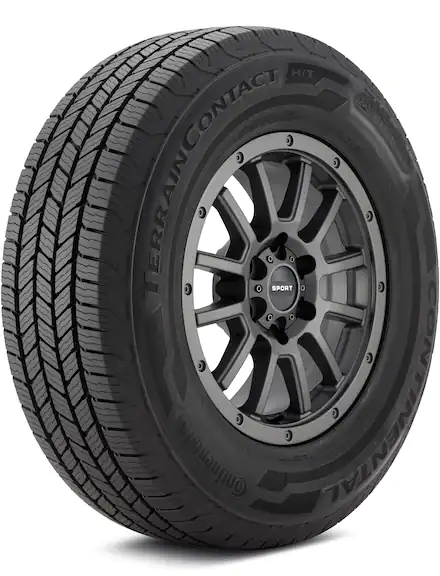
2. Continental TerrainContact H/T
Continental TerrainContact H/T is designed for SUVs, pickup trucks, and jeeps. Continental stands behind the TerrainContact H/T with a 6-year or 70,000-mile warranty and a 60-day trial. So, you can take it for a spin and experience the difference it makes to your drive.
Overall Rating
| Treadwear | 9.3 |
| Dry Traction | 9.1 |
| Wet Traction | 8.9 |
| Winter Performance | 8.4 |
| Noise and Comfort | 9.3 |
| Price | 8.8 |
Pros
Cons
Our Verdict
Continental TerrainContact H/T is a true rain performer, thanks to its +Silane compound and circumferential grooves. These features work together to disperse water from the tire's footprint, effectively combating hydroplaning. The result? A safe and smooth ride, even in wet conditions.
But the innovation doesn't stop there. The tire's designers have cleverly integrated unique noise blockers between the shoulder blocks. This means less noise and more comfort during your journey. Plus, the full-depth, interlocking sipes ensure stable handling and reliable braking, even under heavy loads.
The response from customers towards the Continental TerrainContact H/T is largely positive. They applaud its performance, particularly its wet traction and hydroplaning resistance during rain. I am also impressed with its long lifespan and quiet ride on highways.
However, it's important to note that this tire isn't a one-size-fits-all solution. Some users reported handling and vibration issues, but these were mostly from those who ventured off-road with these tires.
Remember, the TerrainContact H/T isn't designed for off-road use. Interestingly, these same users also admitted that these issues are due to incorrect balancing and alignment. So, while this tire shines in many areas, it's crucial to use it as intended for the best performance.
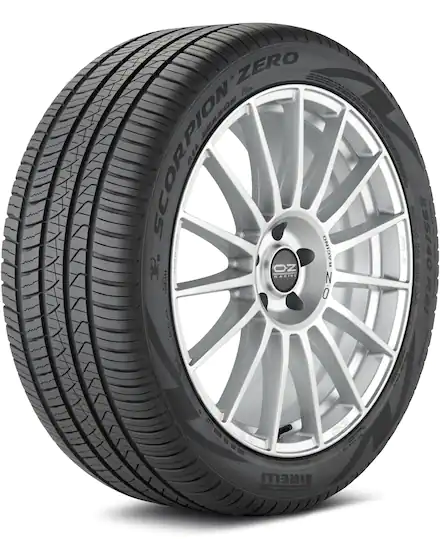
3. Pirelli Scorpion Zero All Season Plus
Pirelli Scorpion Zero All Season Plus is a tire designed for the drivers of powerful crossovers, SUVs, and performance pickup trucks. Pirelli backs the Scorpion Zero All Season Plus with a 6-year or 50,000-mile warranty, and a 30-day trial.
Overall Rating
| Treadwear | 8.7 |
| Dry Traction | 9.3 |
| Wet Traction | 9.1 |
| Winter Performance | 8.2 |
| Noise and Comfort | 8.7 |
| Price | 8.9 |
Pros
Cons
Our Verdict
Pirelli Scorpion Zero All Season Plus is a year-round champion, ready to take on both summer and winter conditions. Its secret lies in its all-season tread compound, a high-silica content matrix enriched with special polymer blends and resins. This combination ensures balanced performance in all conditions. The silica addition enhances wet-weather traction, while four wide, circumferential grooves work to resist hydroplaning by efficiently evacuating water.
For winter conditions, the smaller, inboard tread blocks feature winter-focused zigzag sipes. These create the biting edges needed for traction on slippery roads.
I've found that users have nothing but praise for the wet traction and hydroplaning resistance of Pirelli Scorpion Zero All Season Plus tire. They're impressed with its performance in heavy rain and light snow. It's like having a reliable friend who's always there, no matter the weather.
However, it's worth noting that a few users have reported noise issues on dry pavements and early tread wear. As with any product, it's important to consider all aspects before making a decision. But overall, the feedback I've seen is quite impressive.
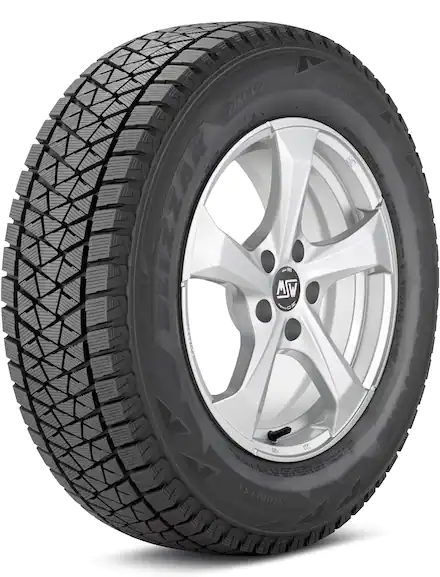
4. Bridgestone Blizzak DM-V2
Bridgestone Blizzak DM-V2, a tire that's a winter warrior. If you own a pickup truck, crossover, sedan, minivan, or SUV, this studless ice and snow tire is a superior choice for you.
Overall Rating
| Treadwear | 8.3 |
| Dry Traction | 8.7 |
| Wet Traction | 9.1 |
| Winter Performance | 9.7 |
| Noise and Comfort | 8.6 |
| Price | 8.9 |
Pros
Cons
Our Verdict
Bridgestone Blizzak DM-V2 provides excellent wet traction, making you a confident driver on a wet track or in the rain.
This tire doesn't just handle winter conditions, it excels in them. It tackles ice, slush, and packed snow with ease, thanks to its unique hydrophilic coating and microscopic bite particles. Its Multicell compound remains flexible even in freezing conditions, ensuring excellent water removal from icy surfaces and better braking on glare ice.
In my experience, the Bridgestone Blizzak DM-V2 offers exceptional longevity and performance when used on the vehicles it's designed for - light trucks, crossovers, and light SUVs.
While it's not suitable for summer use, it proudly sports the three-peak mountain snowflake (3PMSF) symbol, a testament to its superior winter performance. And while it doesn't come with a treadwear warranty, as is common with winter tires, its performance and durability make it a top contender in its category.
Users have reported excellent traction in various conditions, including wet, icy, snowy, and slushy roads, as well as dry roads during winter. Some even achieved over 50,000 miles of use.
However, those who used them on heavy trucks experienced issues with cornering, stability, and accelerated wear, highlighting the importance of using the tire as intended.
Read our full Bridgestone Blizzak DM-V2 Review

5. General Grabber UHP
General Grabber UHP is a tire that's as versatile as it is affordable. Designed for high-performance pickups, sport activity vehicles, sedans, minivans, and SUVs, it's a summer tire that specializes in wet and rainy conditions.
Overall Rating
| Treadwear | 8.2 |
| Dry Traction | 9.0 |
| Wet Traction | 8.9 |
| Noise and Comfort | 8.6 |
| Price | 8.8 |
Pros
Cons
Our Verdict
Its secret lies in its advanced silica compound, molded into a directional tread design with a central V-shaped tread area. This design is similar to the Michelin CrossClimate SUV, combining responsive handling with dry road traction. The V-shaped grooves work to sweep the water away from the tire's contact patch, reducing the possibility of hydroplaning and improving wet traction.
I've found that users highly appreciate the General Grabber UHP for its excellent traction on both wet and dry roads, especially during summer rains. They also commend its braking performance on both dry and wet surfaces and its resistance to hydroplaning.
However, it's important to remember that this is a summer tire, not designed for winter use. Those who used it in snowy conditions reported early wear and poor snow traction. Noise, too, seems to be a genuine concern reported by many drivers but it is a common trait among performance tires.
Like many other summer tires, it doesn't come with a treadwear warranty. But it does offer a 45-day Customer Satisfaction Trial, so you can experience its performance firsthand.
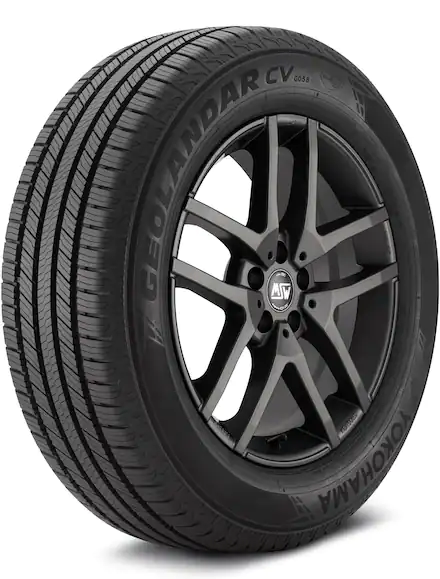
6. Yokohama Geolandar CV G058
Step into the world of affordable, all-season tires with the Yokohama Geolandar CV G058. This tire is a perfect match for crossovers, SUVs, minivans, and light trucks. Yokohama backs this tire with a 5-year or 65,000-mile warranty and a 30-day test drive.
Read the full review of Yokohama Geolandar CV G058
Overall Rating
| Treadwear | 9.0 |
| Dry Traction | 9.3 |
| Wet Traction | 9.4 |
| Winter Performance | 8.5 |
| Noise and Comfort | 9.0 |
| Price | 9.4 |
Pros
Cons
Our Verdict
Yokohama Geolandar CV G058 is an all-season tire with a long lifespan and offers great value for your money.
Its micro Silica compound, molded into a five-rib, and symmetric pattern increases dry traction and evenly distributes load, promoting a longer tread life.
When it comes to hydroplaning resistance, I have found that the Geolander CV G058 doesn't disappoint. Its large circumferential grooves efficiently evacuate water from the tread face, keeping you safe on wet roads.
I've noted that the consumers greatly appreciate the Yokohama Geolandar CV G058 for its long life and excellent traction in both rain and snow. It's a tire that consistently meets and often exceeds expectations, delivering reliable performance in various conditions.
It's clear that this tire has made a positive impression on its users, and I believe it could do the same for you.
Read our full Yokohama Geolandar CV G058 Review
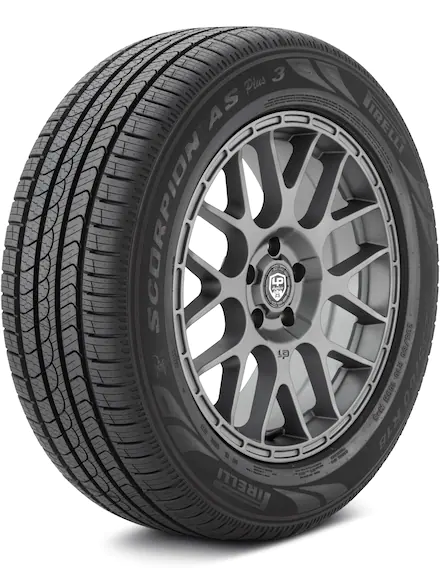
7. Pirelli Scorpion AS Plus 3
Dive into the realm of the Pirelli Scorpion AS Plus 3, a tire that's a true champion of longevity and wet traction. Rainy weather is no match for this tire, thanks to its superior hydroplaning resistance. Pirelli backs this tire with an unlimited time or 70,000-mile warranty and a 30-day trial period.
Overall Rating
| Treadwear | 9.4 |
| Dry Traction | 9.3 |
| Wet Traction | 9.1 |
| Winter Performance | 8.1 |
| Noise and Comfort | 9.1 |
| Price | 8.7 |
Pros
Cons
Our Verdict
Pirelli Scorpion AS Plus 3 tire's asymmetric tread pattern with minimal void space ensures the tire hugs the road, improving grip and enhancing wear characteristics for long-lasting durability.
But it's not all about performance. The large shoulder blocks of this tire also contribute to responsive steering and handling during cornering.
Despite the Scorpion AS Plus 3 lacking the three-peak mountain snowflake (3PMSF) symbol rating, I observed its excellent performance in winter conditions. However, it's not designed to tackle heavy snow or icy conditions.
This tire has earned high praise from customers for its balanced performance across all seasons and in various wet conditions i.e. heavy rain, standing water, and wet roads. Many users commend the tire for its comfortable ride and impressive tread life, with some even surpassing the 100,000-mile mark.
Of course, this tread life can only be achieved with regular rotations, proper inflation pressure, and regular alignment checks & balancing.
Dry traction even surpasses wet performance. This tire delivers a performance that users appreciate and trust.
Read our full Pirelli Scorpion AS Plus 3 Review
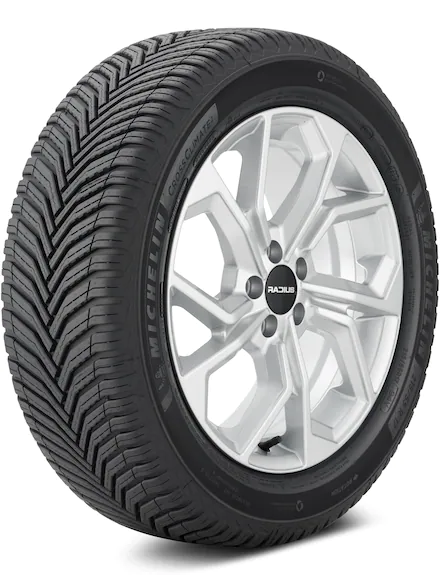
8. Michelin CrossClimate2
Michelin CrossClimate2 is an all-season tire that has captivated drivers of sedans, coupes, minivans, and SUVs. Its remarkable performance across all seasons makes it worth every penny, securing its spot as a best-seller. The tire comes with a 6-year/60,000-mile warranty and a 60-day trial period.
Overall Rating
| Treadwear | 9.0 |
| Dry Traction | 9.3 |
| Wet Traction | 9.2 |
| Winter Performance | 8.7 |
| Noise and Comfort | 8.7 |
| Price | 8.6 |
Pros
Cons
Our Verdict
The unique V-shaped tread design of the Michelin CrossClimate2 tire ensures grip in dry, wet, and snowy conditions. Its Thermal Adaptive Tread compound remains flexible in low temperatures, enhancing its performance. The CrossClimate2 proudly sports a 3PMSF rating, a testament to its exceptional snow performance.
Although Michelin has incorporated noise reduction technology in CrossClimate2, I spotted noise issues in it.
Many users have reported noise issues while driving on highways. However, drivers laud its durability and impressive performance on light snow and wet surfaces, its short stopping distances, and its safe high-speed performance in rain. But I always advise keeping the speed low in rainy weather for safety, no matter how good the tire is.
Read our full Michelin CrossClimate2 Review
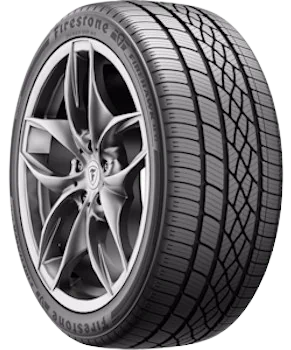
9. Firestone Firehawk AS V2
Firestone Firehawk AS V2 is a budget-friendly all-season tire for high-performance vehicles that demand extra grip on wet roads. While it performs admirably in dry conditions, its true prowess can be seen in wet weather. Firestone stands behind this tire with a 5-year or 50,000-mile warranty, and a 90-day Buy & Try Guarantee.
Overall Rating
| Treadwear | 9.3 |
| Dry Traction | 8.8 |
| Wet Traction | 9.2 |
| Winter Performance | 7.0 |
| Noise and Comfort | 8.4 |
| Price | 9.2 |
Pros
Cons
Our Verdict
The secret to Firestone Firehawk AS V2 performance is its silica-carbon tread compound. This, combined with an increased number of full-depth grooves and sipes, ensures confident performance on wet tracks.
It offers commendable wet handling with an INDYCAR Firehawk rain tire-inspired tread.
However, it's important to note that the Firehawk AS is a performance tire, more suited to the summer season than winter although it claimed to be an all-season tire. Its winter performance is just fine, not great.
Read our full Firestone Firehawk AS V2 Review
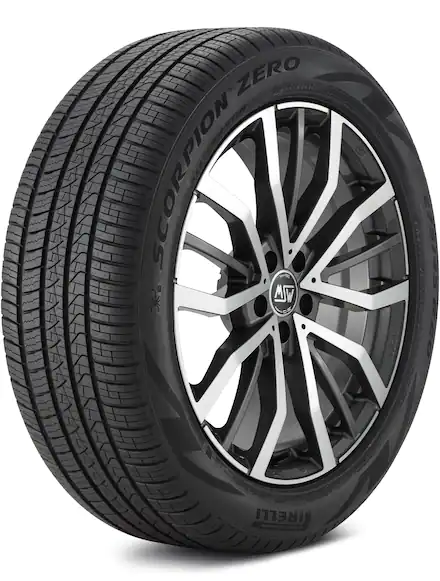
10. Pirelli Scorpion Zero All Season Run Flat
Pirelli Scorpion Zero All Season Run Flat is a top-tier run-flat tire designed for all-season use.
Overall Rating
| Treadwear | 8.5 |
| Dry Traction | 9.2 |
| Wet Traction | 8.8 |
| Winter Performance | 7.4 |
| Noise and Comfort | 8.4 |
| Price | 8.3 |
Pros
Cons
Our Verdict
I am quite satisfied with its grip and traction on both wet and dry roads. Even light snow is no match for this tire, and its handling and response are commendable.
However, opinions on its tread life are mixed. While some consumers praise its longevity, others have reported early wear. It's important to remember that these are all-season tires, not all-terrain tires. If your driving is primarily on rough terrains, you should adjust your expectations accordingly.
The Pirelli Scorpion Zero All Season Run Flat is a testament to Pirelli's commitment to providing high-quality, versatile tires. With its impressive performance in various conditions, it's a tire that delivers on its promises and stands up to the demands of the road.
How to Choose Suitable Tires for Rain?
My list of the best rain tires is diverse, offering options for various conditions. This flexibility makes it easier for you to find the perfect tire for your needs. You need to consider the following factors when choosing rain tires:
Driving Conditions
Consider whether you need summer, winter, or all-season tires. We've also included high-performance tires and highway tires in our list to cater to all your needs.
Tread and Groove Design
Treads with 2D and 3D sipes provide biting edges for enhanced wet traction. Moreover, wide circumferential or directional grooves provide hydroplaning resistance in standing water and during heavy rain. So I advise you to look for these features when buying tires for rain.
Vehicle Type
Some tires are designed for minivans, sedans, and coupes. While some tires are versatile, others are specifically tailored for trucks, crossovers, and SUVs. Choose the tire that is suitable for your vehicle type.
Contact Patch
For rain tires, a wider contact patch is generally more advantageous. This is because a larger contact patch increases the amount of rubber that is in direct contact with the road surface, which can provide better grip and traction, particularly in wet conditions. The improved traction is crucial for maintaining control of the vehicle during adverse weather conditions like rain, where the risk of hydroplaning and losing grip is higher.
How Do We Select the Best Tires?
We don’t just pick the tires randomly. There is a lot of work behind suggesting the lists of the best possible tires for readers and buyers. We adopt a multi-dimensional approach rather than just a 'single person experience'. Our lists and reviews are a collective wisdom of many users rather than a single user.
To determine the best tires, we undertake extensive market research, meticulously examine the specifications of each tire, and carry out a very thorough analysis of user reviews from top retailers. Finally, our keen tire experts apply their experience and expertise and provide a well-rounded assessment to create the final list of the best possible tires. Read our detailed review process.
